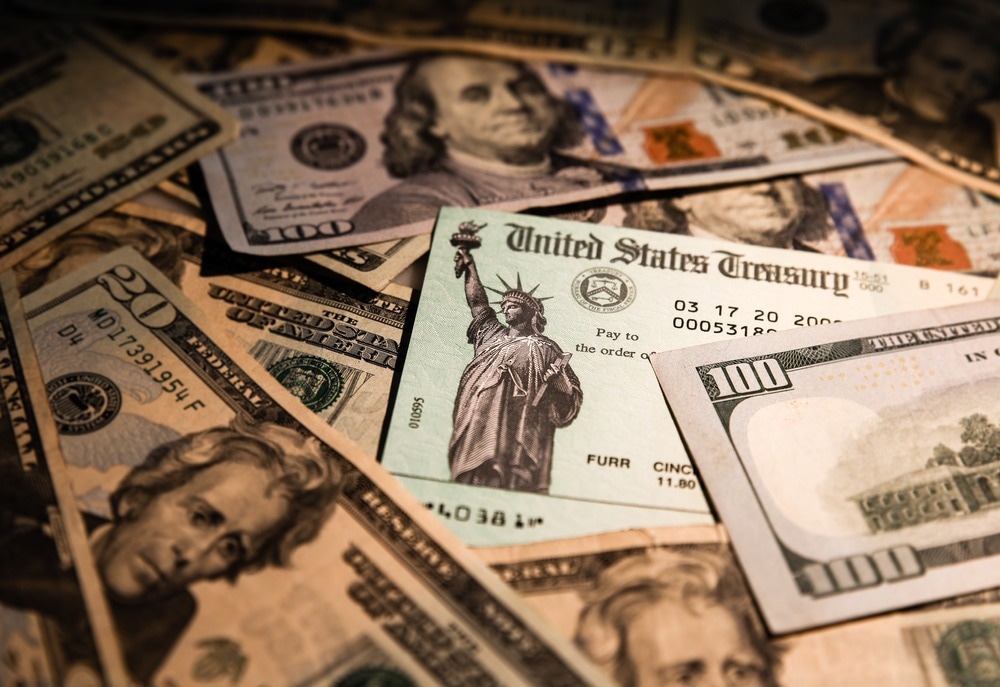In a recent study published in The BMJ, researchers explore the United States public funding for the development of coronavirus disease 2019 (COVID-19) messenger ribonucleic acid (mRNA) vaccines.

Study: US public investment in development of mRNA covid-19 vaccines: retrospective cohort study. Image Credit: Jason Raff / Shutterstock.com
The development of COVID-19 vaccines
Creating safe and efficient mRNA vaccines against severe acute respiratory syndrome coronavirus 2 (SARS-CoV-2) was one of the most significant public health achievements of the COVID-19 pandemic. The effectiveness of SARS-CoV-2 mRNA vaccines was made possible by scientific innovation and biotechnology advancements over the past 30 years, as well as significant support from the United States and other countries.
Once the pandemic started in 2020, the United States made enormous financial investments in completing clinical trials and issued advance purchases ensuring millions of vaccine doses before their safety and effectiveness had been wholly proven.
About the study
In the present study, researchers assessed the U.S. public investment in developing COVID-19 mRNA vaccines.
Three key data sources were utilized to identify public funding, which included the National Institute of Hydrology (NIH) Research Portfolio Online Reporting Tool Expenditures and Results (RePORTER), the Biomedical Advanced Research and Development Authority (BARDA) Medical Countermeasures Portfolio, and the Department of Defense Contracts database.
The team reviewed scientific data describing the history of SARS-CoV-2 mRNA vaccine development and considered four essential inventions. These inventions included lipid nanoparticle development as a drug delivery system, production, and alteration of mRNA, along with small interfering RNA (siRNA), the definition of the prefusion SARS-CoV-2 "spike" protein structure, and RNA vaccine biotechnology development for human use.
A patent network analysis of COVID-19 mRNA vaccines was used to identify 88 significant patented inventions and links to firms licensing the technology. In addition, all inventors mentioned in these 121 patents were identified. The list with additional researchers identified through published accounts of mRNA vaccine development, news stories, and press releases was created.
Two authors independently allocated the contributions made by each scientist toward one or more of the four inventions based on a review of the attributions and patents. To maintain a comprehensive search technique, every potential invention was included.
The researchers created search terms by associating each scientist's name with a standard term characterizing the researcher's invention(s). For example, the search terms included the scientist name and nanoparticle or lipid or lipid nanoparticle; scientist name and siRNA or mRNA; scientist name and spike or perfusion; scientist name and immune* or vaccin*; and scientist name and SARS-CoV-2 or COVID-19 or coronavirus.
Results
The team selected 205 researchers and performed 449 PubMed searches on their work, leading to 4,627 publications. These articles were associated with 20,825 fiscal years in RePORTER and merged into 2,676 unique NIH-funded grants.
The team discovered 34 NIH research grants with a total funding of $692 million directly associated with one of the four critical discoveries within COVID-19 mRNA vaccines, including $116 million in pre-pandemic NIH research funding spanning 165 fiscal years. An additional 603 NIH grants with USD 5.9 billion of funding were also identified.
Further funding by the BARDA and Department of Defense raised the total U.S. public investment for pre-pandemic research and development to almost $337 million. This included a total of USD 31.9 billion from 1985 to March 2022, including spending on research, development, and vaccine supply.
Of the $337 million invested in research and development prior to the pandemic, $116 million was contributed by the NIH, $148 million by BARDA, and $77 million by the Department of Defense. In addition, the number of fiscal years financed by the NIH rose from one observed from 1985 to 2001 to 21 in 2019, with funding increasing from less than $1 million to over $10 million.
The Department of Defense and BARDA provided most of the funding for vaccine development. BARDA financed the clinical trials, basic and translational science, and manufacturing capability of the mRNA Zika vaccine with Moderna. The Department of Defense invested in Moderna and CureVac.
From the pandemic's beginning in 2020 to March 2022, the U.S. government expended at least $2.3 billion in the research and development of COVID-19 mRNA vaccines. In addition, BARDA funded Moderna's clinical trials, whereas the NIH funded other clinical trials, all the while investments were also made in manufacturing and fundamental or translational science.
The Department of Defense and BARDA spent another $29.2 billion on pledges to purchase two billion vaccine doses. These pledges comprised doses intended for U.S. population vaccination and global vaccine donations.
Moderna also received over $18.1 billion, of which $16.2 billion was for vaccination supply. Pfizer-BioNTech received $13.1 billion, primarily for vaccine supply.
Conclusions
The U.S. government spent at least $31.9 billion to develop, create, and acquire COVID-19 mRNA vaccines, including substantial expenditures in the three decades preceding the pandemic and until March 2022. These public investments led to millions of lives being saved. Moreover, they were essential to the development of mRNA vaccine technology, which has the potential to combat future pandemics and treat other diseases. To maximize global health benefits, policymakers should ensure equitable access to publicly supported health technology worldwide.
Journal reference:
- Lalani, H. S., Nagar, S., Sarpatwari, A., et al. (2023). US public investment in development of mRNA covid-19 vaccines: retrospective cohort study. The BMJ 380. doi:10.1136/bmj-2022-073747